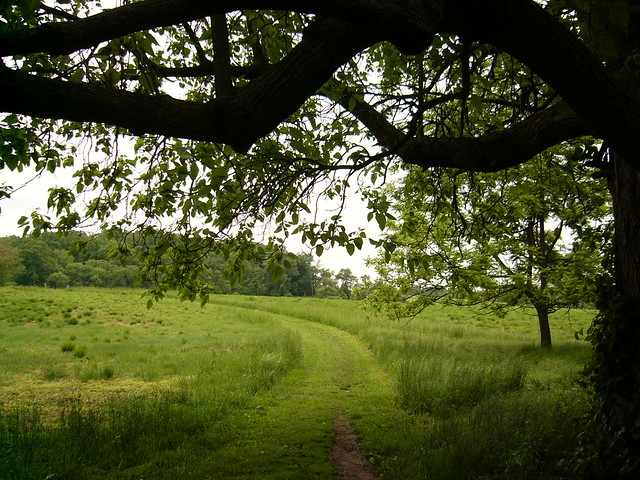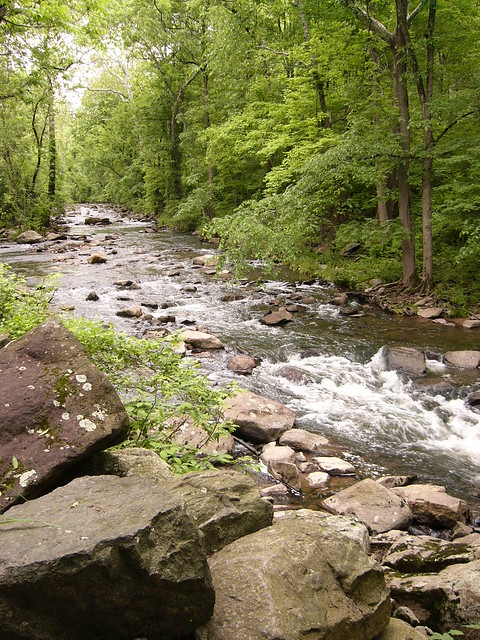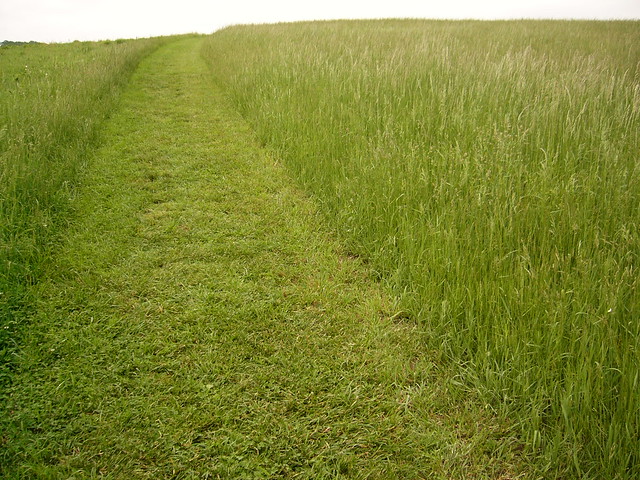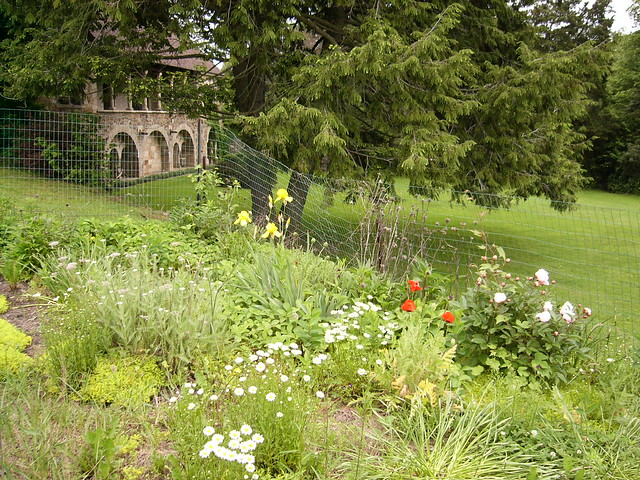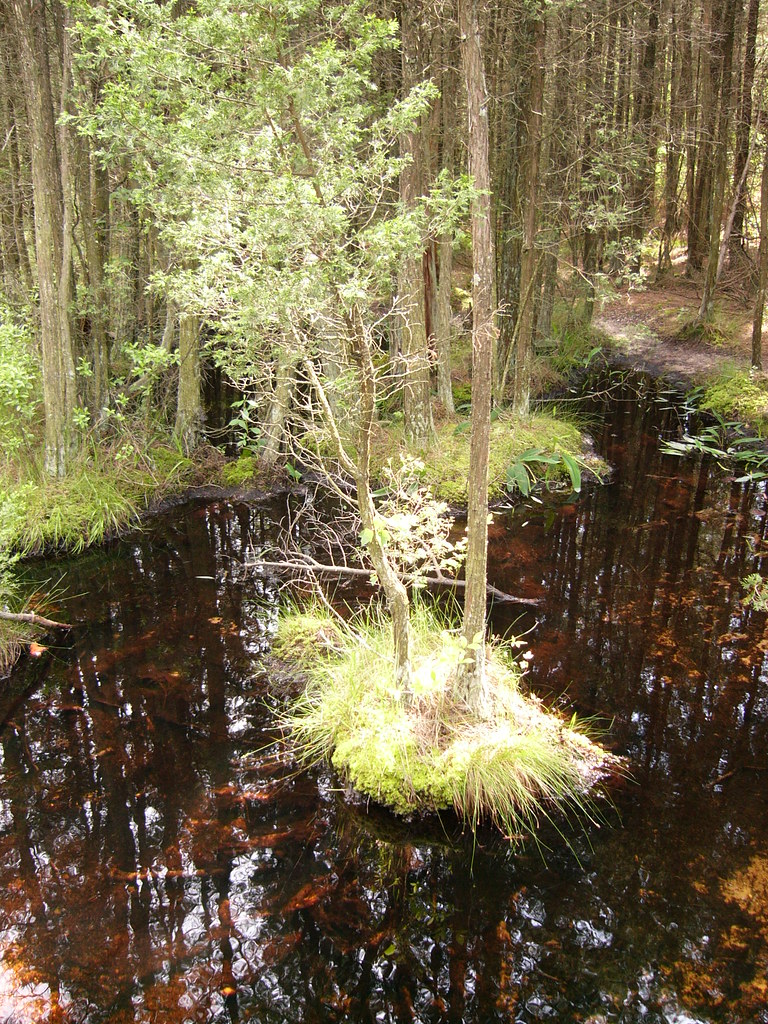
I've loved the Pine Barrens since I was a kid. I have happy memories of coming to the Pinelands to pick blueberries, visit ruins, look for slag iron, and swim and canoe in the cedar water, which we would invariably compare to root beer--its brown color is from iron in the soil and cedar tannins.
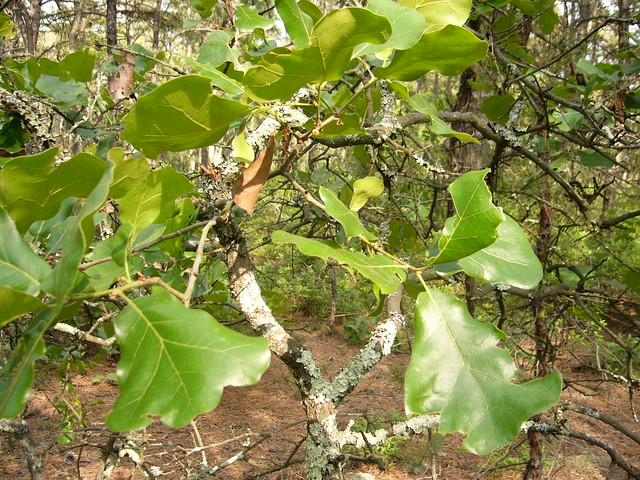
The soil is so sandy only certain plants thrive here, and the trees tend to be shrimpy, like pitch pines, or the blackjack oak above. The shrub layer is an ocean of blueberries. Their snowdrop flowers bloomed for us when we visited:

The hike our book recommended began at the Carranza memorial, paid for by Mexican schoolchildren to commemorate a dashing young Mexican aviator who crashed in the pines coming home from a goodwill mission in 1928. You know I love elegies and am ever eager to grieve, so the memorial appealed to me. There is still a ceremony here every year with the local American Legion post and the New York and Philadelphia Mexican consulates.
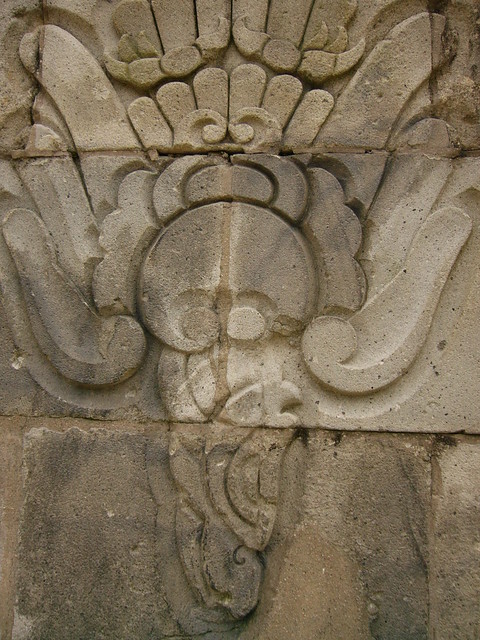
The memorial was hard to find! We backtracked and asked directions in a small town we passed through. Our hiking book once again proved its ineptitude by averring that the memorial would be hidden from the road by trees: It was clearly visible, confirming our contempt for the book. Other discrepancies arose on this hike; we wondered again if the authors of hiking books actually hike their own hikes...
The Pine Barrens is the most exotic biome we've visited in our year of hiking, and our most wretched hike. Although I have a fascination for Pinelands history, culture, and ecology, this hike was overpoweringly monotonous. South Jersey is coastal plain, so the landscape was flat as an ironing board, and because the Barrens' peculiar soil limits the diversity of species that grow here, we saw the same flora over and over again. By canoe, the barrens are thrillingly varied and picturesque, but hiking them as we did was like being forced to listen to your favorite song for four hours straight.
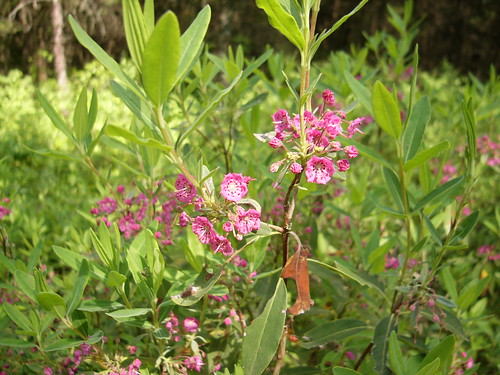
Beautiful, right? But the unrelieved monotony of the terrain, combined with absolute windless stillness and thick humidity--and an abundance of ticks (we pulled four off us on the trail and five more at home) made Batona the only actually hellish hike we've done this year. I found myself meditating vividly on, almost inhabiting the Borges essay about literary hells--and understanding for the first time how our pioneer ancestors could have regarded all wilderness as desolate wastes fit only for devils--and lunatics.
(This may be the place to confess that my horror of Lyme disease may be disproportionate to the actual risk... but I'm working on it.)
We would have turned back, but the book--the perfidious book--promised a spectacular view from a fire tower if we made it to the turn-around. Would anyone, I wondered, put up a memorial to me on the trail if I died of boredom on it? And if they did, could it be a dramatic, morose, and gothicky ruin like in this Caspar David Freidrich painting:
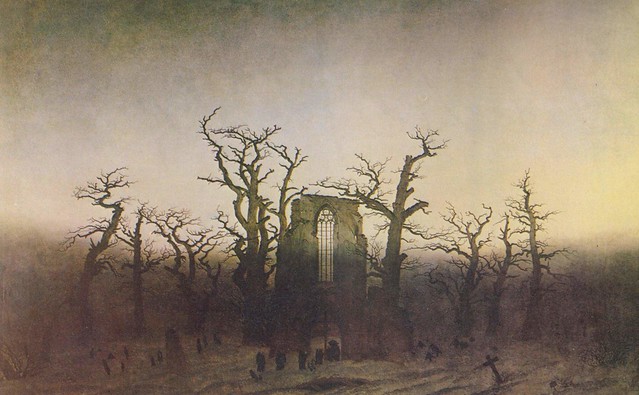
Start saving your pennies!
The Batona Trail is maintained by the Batona Club--Batona being an acronym for Back To Nature. Because they thought up an appealing acronym for themselves, and because the Batona Trail is the most clearly and intelligently blazed trail we've hiked this year, I felt very affectionate toward the Batona Club as we hiked, despite my other miseries. I imagined Batona Club members marching to our rescue with humongous foaming mugs of locally brewed root beer, robustly singing Batona hiking songs, all bearded, of course, and in lederhosen.
Then, because the blazes on the trail are hot pink, the lederhosen became hot pink.
This reverie preserved my sanity as we neared our destination. There was a slight breeze, blueberry bushes gave way to ferns, and the trail rose up a slope. I saw a blueberry bee--a favorite--and then, the fire tower:
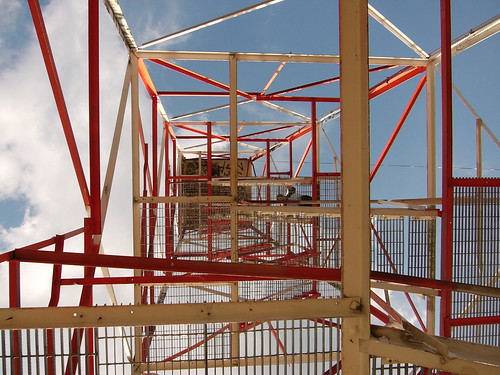
The fire tower was the only place we saw invasive species on this hike: Asian white mulberries, empress tree, tree of hell, and multiflora rose--because, I'm guessing, these species thrive along edges and in disturbed areas, and the seeds probably hitchhiked in with the wise sages who scrawled poetry and philosophy, zen koans, and words of existential encouragement in marker all over the fire tower.
So, we saw the view.

Now you've seen it too, and will never have to do this hike. I stood on the fire tower, sticky, tired, uncomfortable, and vaguely angry, and noticed a trio of groundhogs browsing the ferns below. From our height, it was difficult to tell their size, so I had to eliminate some other mammal possibilities before settling on groundhogs. Because muskrats had been a contender, my camerado and I discussed possible meanings of the song Muskrat Love by Captain and Tenneile, ultimately deciding that the song had no esoteric secrets. We watched the groundhogs from the silence of the tower and I realized that the trio of groundhogs had wholly dispelled my ill-humor.
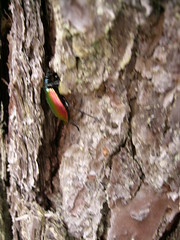
Thanks to the groundhogs, who, we've learned, have the ability to impart a Yoda-like calm to troubled wayfarers, I faced the walk back with a composed mind. My camerado, however, had reached the end of his patience and now found himself maddened by the repetitive flatness of the hike and the soggy air, becoming increasingly frustrated as we approached our car. This is the only hike in the book we agreed to never hike again.
That said--for the record--the fauna did not let us down. We saw: a fence lizard (with gray markings exactly the color of lichen), black swallowtail butterflies, a green sweat bee--staggeringly vibrant, and the astonishing caterpillar hunter beetle in the photo above. (Caterpillar hunter is a deliberately introduced exotic, and one that, like the honeybee, no one seems to resent). Our passing flushed a black bird with orange markings from the shrub--a Baltimore Oriole...? We also saw more adorable blueberry bees and the homes of ground-nesting bees. The Pine Barrens, specifically Batsto Village, is the earliest day trip I can remember, and for this and a thousand other reasons our infernal hike will not color my feelings about the Pinelands--but we'll likely never visit again in summer unless in a canoe, preferably with a bearded, lederhosen-clad gondolier, and trios of singing muskrats along the banks.

